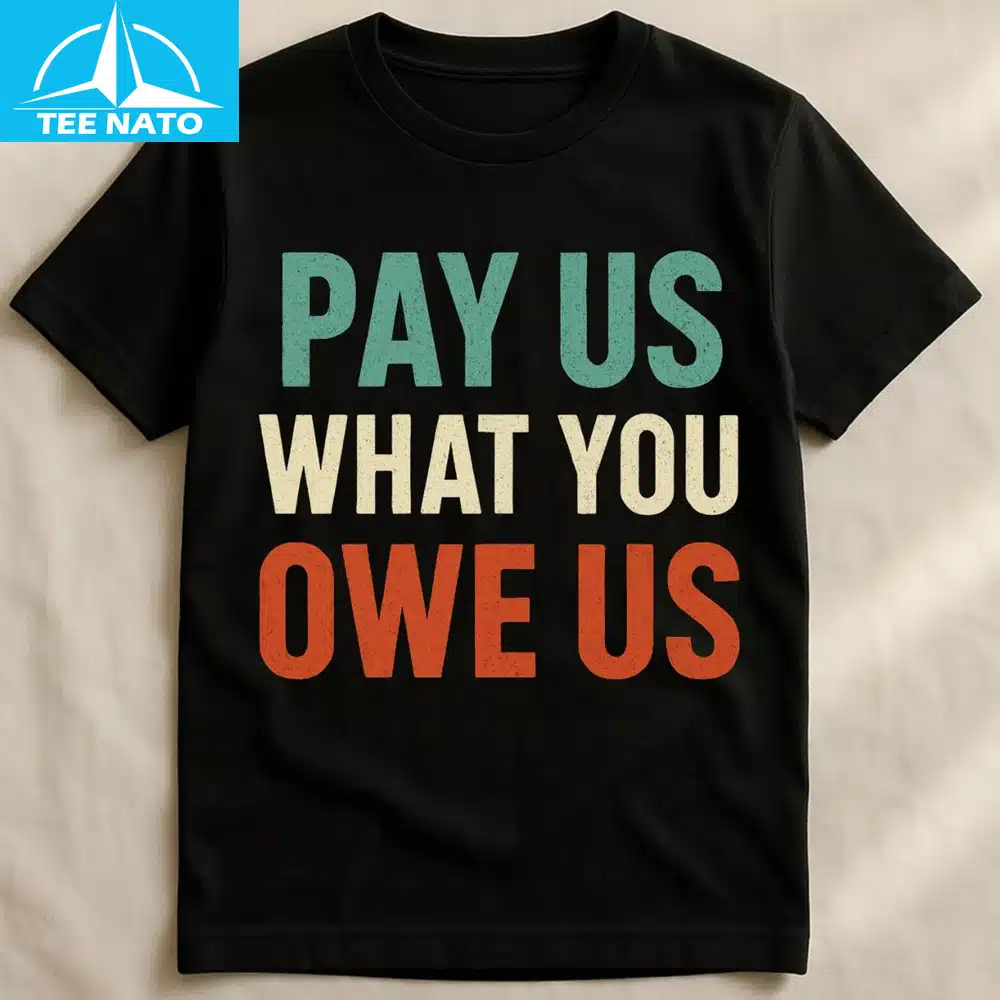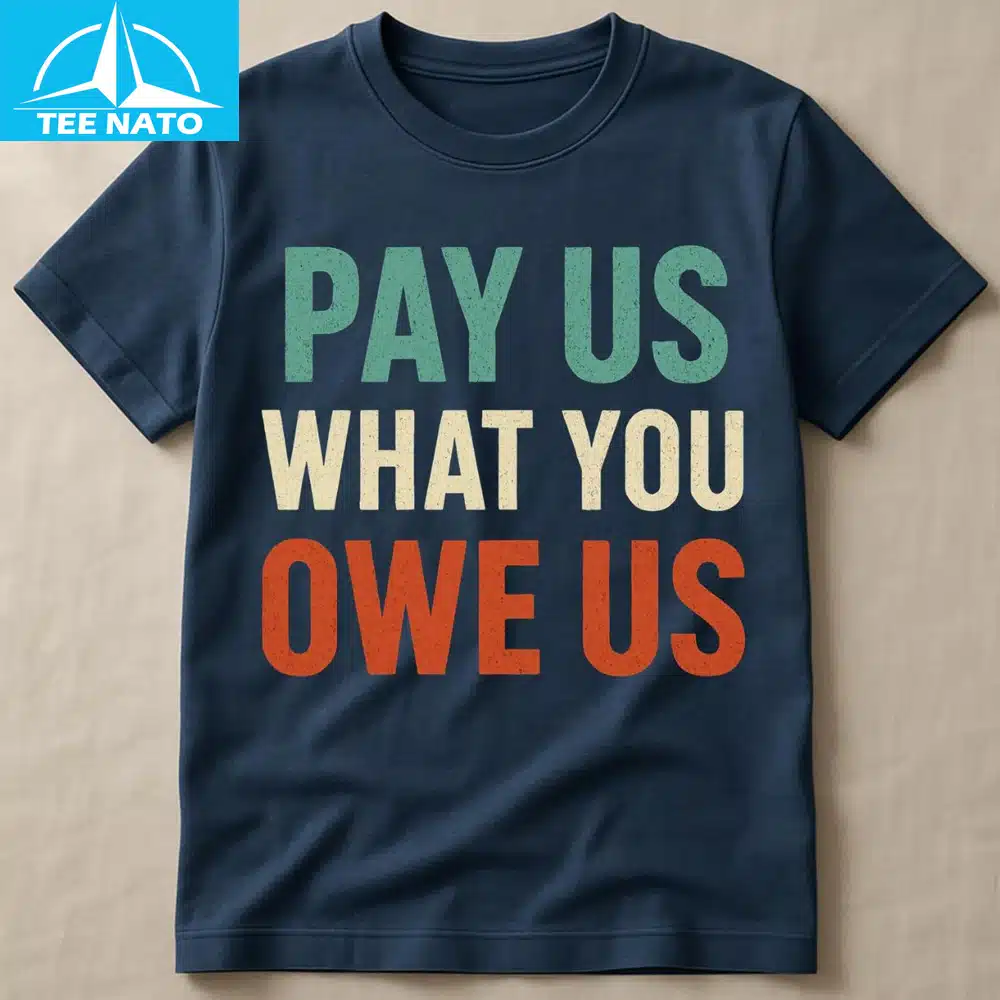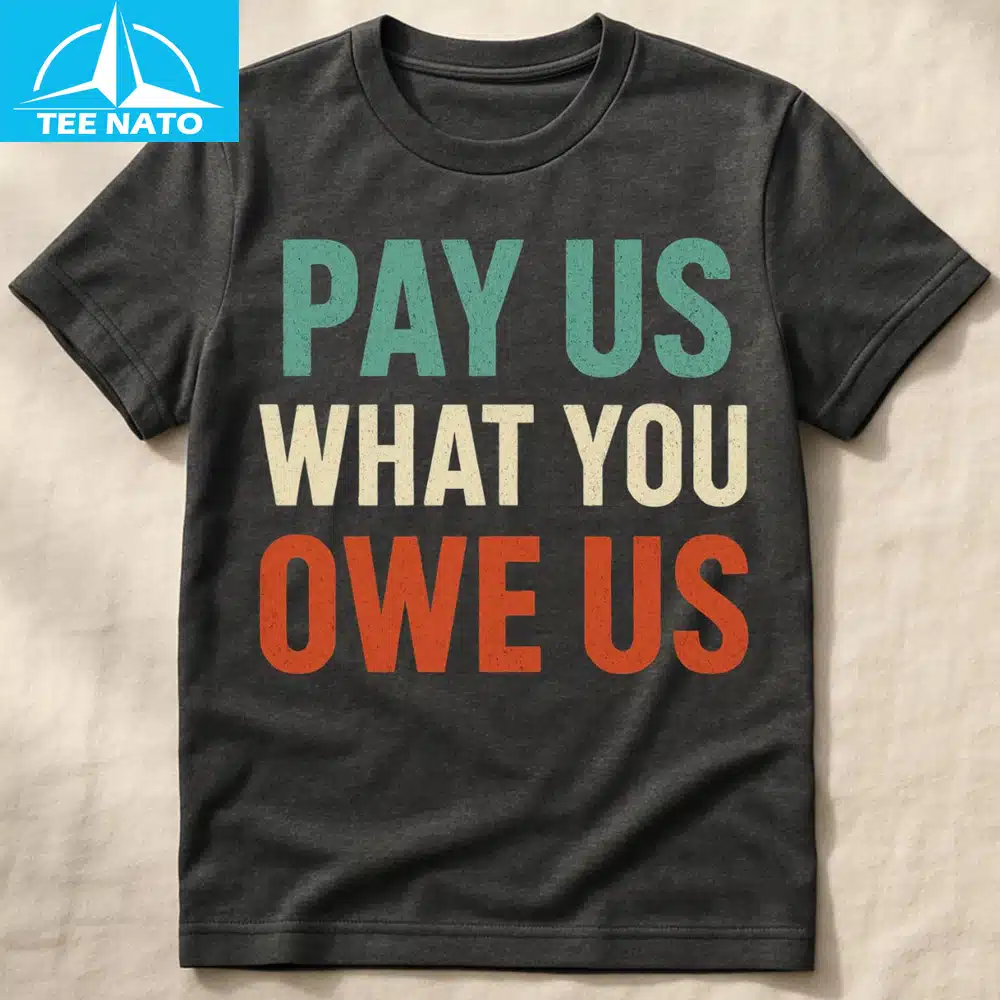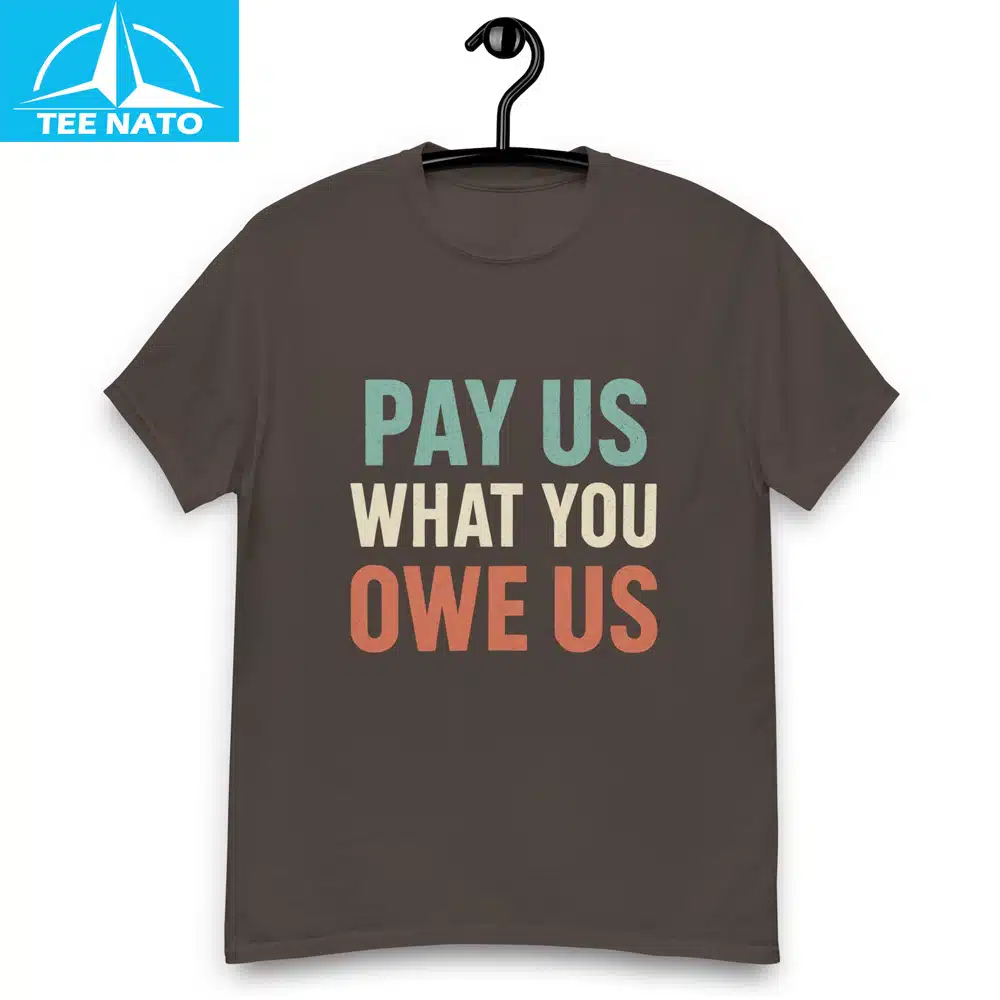Wear Your Demand: The ‘Pay Us What You Owe Us’ Statement T-Shirt
Wear Your Demand: The ‘Pay Us What You Owe Us’ Statement T-Shirt
The Pay Us What You Owe Us Bold Statement Shirt is more than an article of clothing—it is a potent tool for demanding fairness and transparency. Whether you’re championing wage equality, recovering unpaid debts, or fighting for social justice, this shirt ensures your message cannot be ignored.
Here’s how to make it part of your advocacy:
- For Demonstrations: Wear it to rallies and marches that focus on workers’ rights.
- For Social Media: Use it in photos along with hashtags to raise awareness online.
The Reason Why the Pay Us What You Owe Us Shirt Resonates
This striking shirt isn’t just a style choice—it’s activism in wearable form. As economic disparities continue to widen, this shirt makes a direct and clear statement: accountability is crucial.
![]()
Apparel as a Vehicle for Protest
Clothing has consistently been used as a medium for social and political dissent. From suffragette attire to modern protest tees, what a person wears can send a powerful message.
The Pay Us What You Owe Us Bold Statement Shirt builds on this history. It turns unspoken grievance into an explicit demand. Unlike fuzzy slogans, this direct phrase targets systemic issues head-on.
By wearing it in public, you force those around you to confront the often-ignored problems of wage theft and financial abuse.
How It Elevates Overlooked Voices
A great number of workers—especially in freelance and gig roles—are denied their rightful pay with little ability to fight back. This shirt grants them visibility.
![]()
For independent contractors, delivery drivers, or interns working for little pay, it is a declaration of self-worth. It says, “My labor is valuable.”
Studies confirm that visual protests can increase public awareness by up to 40% over digital petitions. A bold t-shirt serves as a bridge between online and real-world activism.
Setting It Apart from Other Protest Wear
While a generic “Justice” shirt is good, this design names the specific injustice—unpaid dues.
Where some slogans make a request (e.g., “Let’s Be Fair”), this one issues a directive (“Pay Us”). This change from a request to a demand fundamentally shifts the power dynamic.
A Guide to Styling the Pay Us What You Owe Us Shirt
Making a strong statement requires a strategic approach. Here is how you can maximize this shirt’s power.
Pairing with the Right Accessories
A straightforward approach ensures the core message is not overshadowed.
- Black Trousers or Jeans: Helps keep the focus on the shirt’s text.
- A Red Accessory: Can symbolize solidarity with labor and workers’ movements.
- Durable Boots: This footwear choice can represent working-class grit and determination.
Stay away from anything too gaudy or distracting that could take away from the shirt’s main point.
Wearing It at the Right Time and Place
Not every environment is appropriate for a confrontational statement.
Protests, labor union meetings, or strikes are highly suitable. A job interview? Not so much—unless you are there to demand your back pay!
Context is crucial. Wearing it to a corporate meeting could open up a dialogue, while wearing it to a casual gathering might just seem odd.
Maximizing Your Reach on Social Media
A photo of you in the shirt, paired with a personal story of wage exploitation, makes the issue more human.
Sample post: *”Waited three months for overtime pay. This is for everyone fighting the same battle.”*
Platforms like Twitter and Instagram can amplify your message. Tagging organizations like @FightFor15 or @ACLU can help get more attention.
The Real-Life Results of the ‘Pay Us’ Movement
The numbers are clear. Wage theft is a crisis affecting millions of people.
| Metric | Figure |
|---|---|
| Amount of unpaid wages in the U.S. each year | $15 billion |
| Number of workers impacted | 3 million+ |
| Success rate for formal wage claims | 12% |
Stories from People on the Frontline
Maria, a server at a restaurant, put on the shirt and went to her boss’s office after being denied her tips.
A photo of her action went viral on social media, which ultimately led to a settlement in her favor.
These examples prove that what you wear can be a powerful catalyst for real change.
Corporate Responses to Grassroots Pressure
Companies are very sensitive to bad public relations. When their employees wear this shirt in unison, it can be more effective than a lawsuit.
Companies like Amazon and Walmart have had to deal with protests using similar shirts, which pressured them to resolve wage issues more quickly.
The Power and Limits of Legal Avenues
Even though there are laws to protect workers, they are often not enforced well. This shirt gets around the slow bureaucracy by using social pressure instead.
It’s a powerful reminder that justice shouldn’t have to depend on broken systems alone.
Conclusion
The Pay Us What You Owe Us Bold Statement Shirt effectively combines fashion with a call to action. It is a voice for the voiceless, a symbol for the exploited, and a direct challenge to the structures of power.
Wear it with conviction, tell your own story, and demand what is rightfully yours—because your silence won’t pay the bills.
POSTER SEO_SIBATOOL

